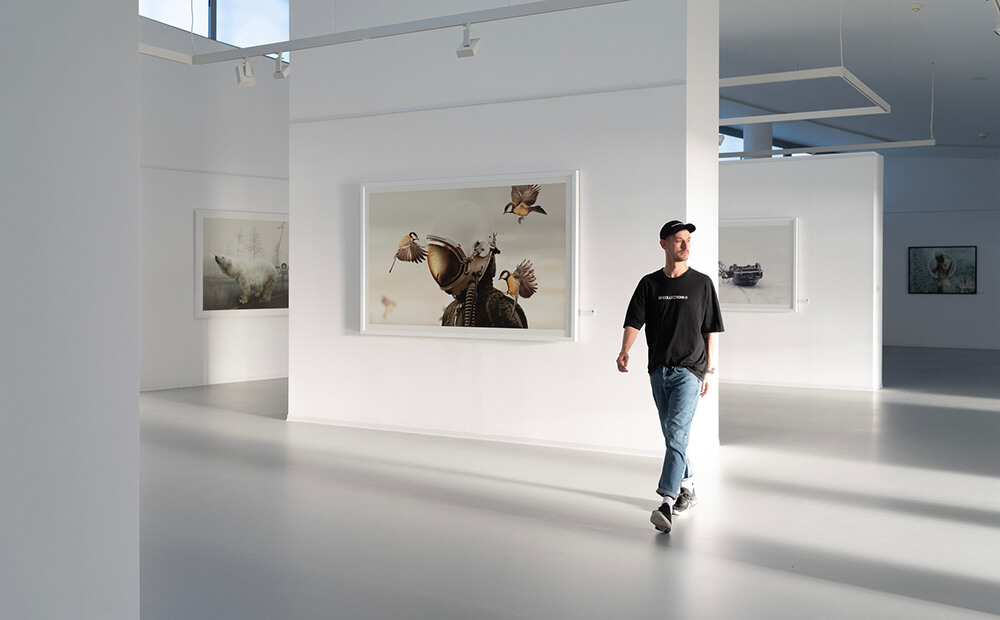Martin Stranka was born on Friday April 13, 1984 in Most, Czech Republic, where he lived with his parents and older sister until the age of three. For the next twenty years, family then moves to Litoměřice, where he attends elementary school and the Josef Jungmann Gymnasium. He went on to study economics in Prague, where he has lived and worked ever since. He never studied art, but after the loss of a close friend in 2007 he turned to photography as therapy to regain his balance in life. After completing his university studies, he worked as a human resources manager while continuing in his pursuit of photography which later became his passion. In December 2010 his passion became his profession when he accepted commissions from New York publishing houses Sterling Publishing and HarperCollins.
In his seventeen-year career, Stranka won more than 90 international awards, and honorary mentions in photography, of which the most significant include Special Photographer of the Year from the International photography Awards in New York in 2022, and 1st place in the Sony World Photography Awards that he won in 2018 and 2019 in London. His works were exhibited and auctioned at Christie’s in London in early 2023.
Martin Stranka exhibited his work in New York, Miami, London, Paris, Prague, and Shanghai, in galleries including Christie’s London, Saatchi Gallery, SNAP! Orlando, Somerset House in London, or the exhibition hall of Prague’s Mánes. His works already attract the attention of art collectors and can be seen on the covers of books published by HarperCollins, Sterling Publishing, and Penguin Random House. Martin has also created several photographic visuals for the National Theater, the National Theater Ballet, and the National Theater Opera. He has published four monographic books the last of which was published the retrospective book for the exhibition at the Danubiana Meulensteen Art Museum.
Statement
Martin wrote about his work: ''I’m always searching for beauty, but to me, the sort of beauty that is obvious seems uninteresting and empty. To the contrary, a flaw in something that is seemingly perfect adds vital meaning to the captured scene and catches my often-distracted attention. At least a small wobble of emotion to contrast the calmness of mind in a piece of art makes sense to me. As an artist, I need to strip both myself and the viewer of certainty in order to create space for the necessary multitude of questions. I look for form and content that harmonizes with people and provides them with a quiet visual refuge. At first glance, the images I capture are calm, yet under the surface, they rage and roar. I plant a sense of dismay into the same artwork, be it only with the slightest hint of something sinister lurking beneath the surface. And it never ceases to amaze me that such seemingly incompatible contrasts can be combined into one image.
I constantly return to the narrative of the relationship between mankind and nature, as well as the exploration of human existence itself. Loneliness and isolation – such relevant topics today – seem to me like an endless line of poetry that I stitch through every photograph, even if only marginally. I can’t let go of the feeling that it is in isolation that I find a much-needed dialogue. A dialogue with myself, within myself, into myself. The visible silence in a photograph is contrasted by hectic thoughts that I’m unable to resist. And after all, I don’t want to defy them, I just need to accept everything as an observer. Observation and voyeurism become the best ways to learn.
I repeatedly try to discover the connection between visual beauty and dramatic reality. What connects the state of oversaturation of human relationships and the state of one’s own loneliness? I need to know the answer. In my work, I continue to experiment with the portrayal of personally experienced intimacy contrasted against the more ephemeral feelings of closeness between strangers. I try to give meaning to situations and objects beyond how they are perceived. I’m driven to tear down traditional contexts, to give states and objects different meanings, and thus place ordinary experiences in extraordinary contexts. Although this process may seem complicated, to me it comes completely spontaneously every step of the way. The medium of photography allows me to materialize all these external happenings and flickering events onto paper.''
